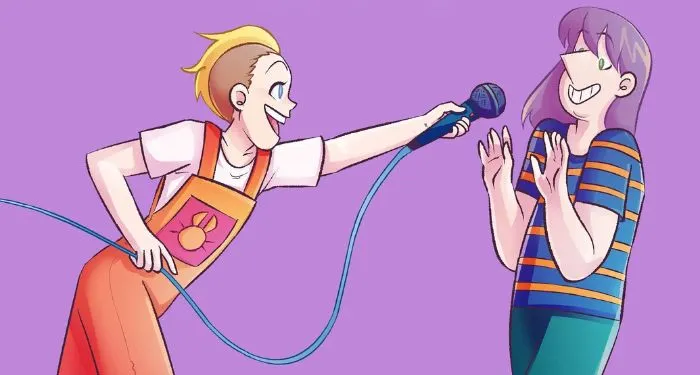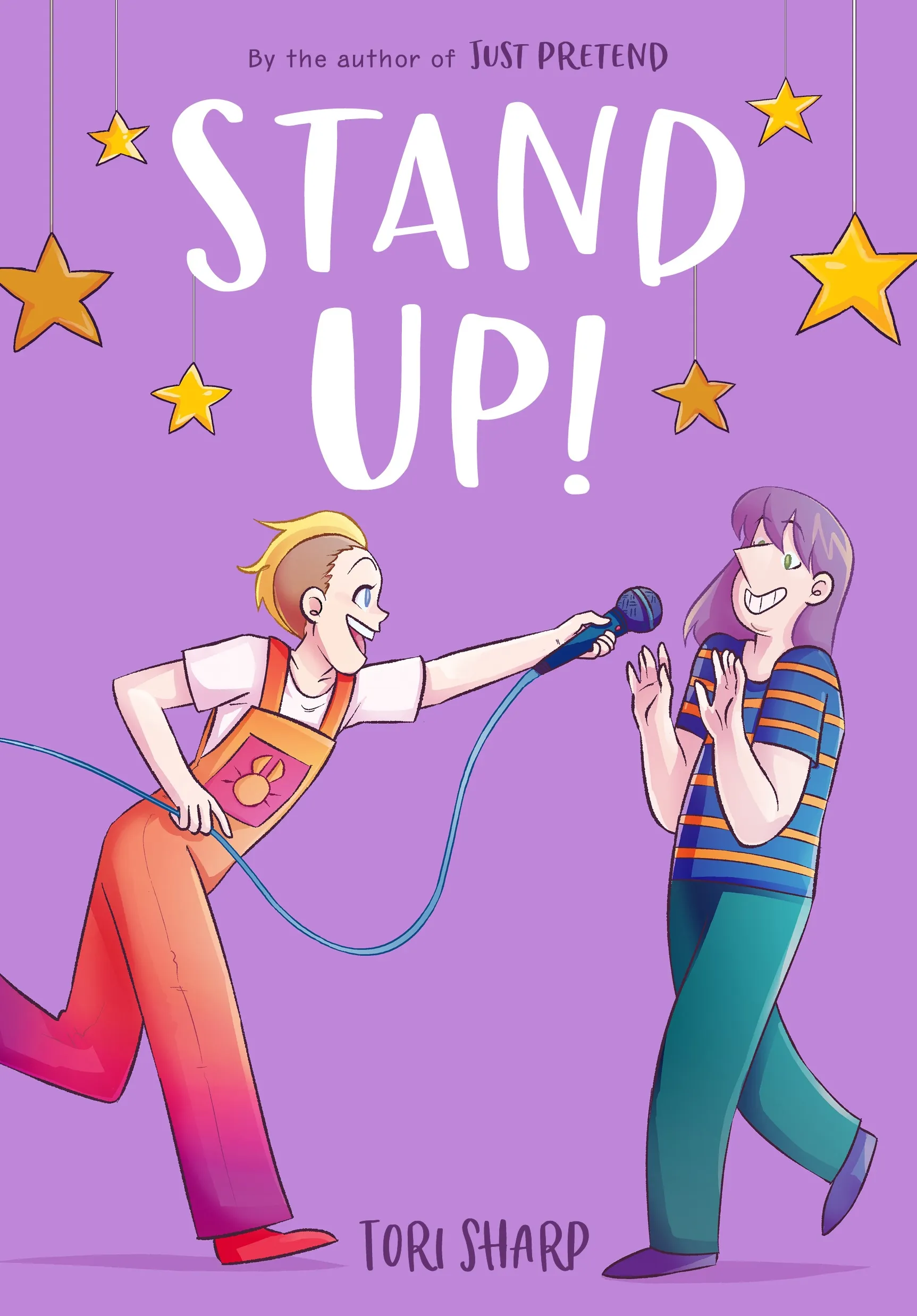
The Cutest Comic for ADHD Awareness Month
October is ADHD Awareness Month, a time to learn and educate others about attention-deficit/hyperactivity disorder. ADHD is often the butt of jokes and misunderstood, and stories featuring neurodivergent people frequently focus on the downsides of being different. That makes it all the more important to spotlight graphic novels like Stand Up!, a fun comic with neurodivergent characters that was created by a neurodivergent author, Tori Sharp. For this ADHD Awareness Month, I interviewed Ms. Sharp about her book and the power of positive representation.
Stand Up! is about best friends Clay and Kyle, who have always enjoyed working behind the scenes on their middle school musicals. With graduation approaching, Clay is ready for a change and decides to audition for — and gets — a part in the next play. (“What better place than the theater to figure out who you are?” says Sharp.) But acting is not as fun as she hoped, and she soon finds herself more interested in creating an advice podcast with Kyle — and in Dania, who has her own reasons for being reluctant to perform in the school play.
Both of Stand Up!‘s leads are neurodivergent: Clay has ADHD and Kyle is autistic. These identities were inspired by — but do not directly correlate to — Sharp’s own neurodivergence.
“Clay’s ADHD and Kyle’s autism aren’t even identical to mine, and I wrote them,” she says.
She explains that there were two reasons for splitting her identities into separate characters. First, “[i]f I’d given Kyle’s autism and Clay’s ADHD representation to a single character…it may have muddled the representation, and I believe that clarity is the first pillar of writing. There is so much overlap in the traits of autism and ADHD that, in some presentations, they can be quite difficult to tell apart.” And second, “making good-natured jokes about it is much easier if it inhabits two separate characters who can dish it back and forth. And this is a comedy, after all!”
The humor is part of what makes Stand Up! so unique. While Clay and Kyle’s neurodivergence certainly influences their lives, it is neither the driving force nor a source of angst. Finding comics — or stories more generally — where neurodivergent characters get to have fun adventures is still quite rare. Off-hand, the only graphic novel Sharp could think of with inspiring representation was Space Boy, which features a character whose synesthesia is “portrayed so beautifully” that it “made [Sharp] love the story all the more.” Still, Space Boy is less a “feel-good” romp and more “steadfastly hopeful even though it deals with trauma and other heavy topics.”

According to the CDC, seven million children in the U.S. have been diagnosed with ADHD, but that doesn’t tell the full story. Many children (including Sharp, who didn’t realize she might have ADHD until college) go undiagnosed. Since ADHD does not magically disappear when a child turns 18, that means there are millions of adults out there living with it in need of support, too.
Stories like Stand Up! play a vital role in spreading awareness and compassion. They help neurodivergent readers see that “needing to take things at our own pace is never a bad thing,” while neurotypical readers gain a better understanding of people they know (or might know in the future) who see and experience the world in different ways.
“There’s just as much diversity within the neurodivergent population as there is in the neurotypical population; that’s part of the point of STAND UP!,” says Sharp. “We each get to discover our own stage, our own values.”













